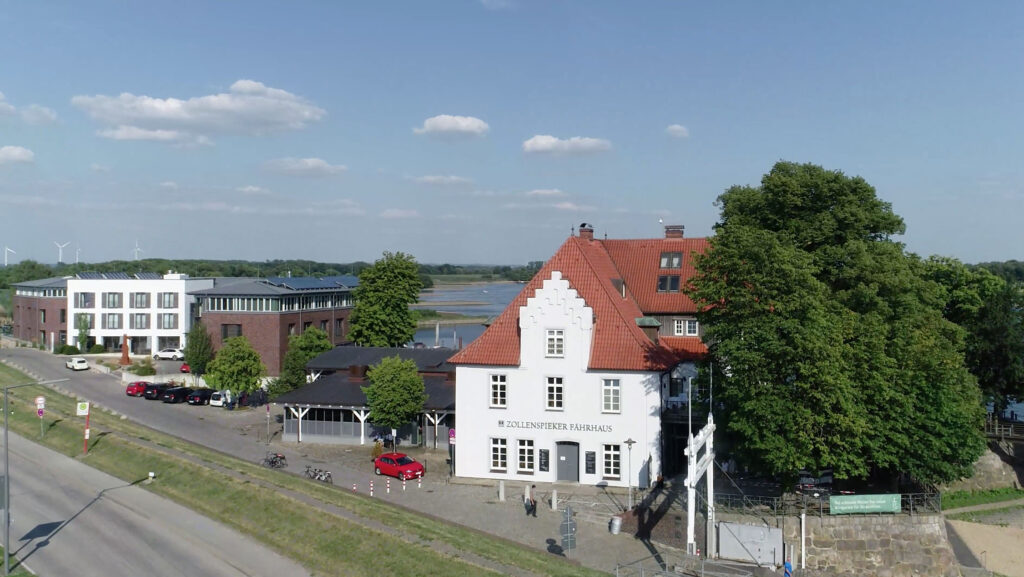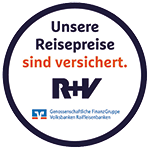History
" The Zollenspieker says hello to you: 'I want to see everyone happy and cheerful!' "
Zollenspieker Fährhaus
When a new hotel is opened, it’s like a wedding celebration. It’s a significant event that is expected to last for many years. The hotel must have a well-planned concept, comfortable rooms, and satisfied guests to succeed. Something old, blue, and something new is needed to complete the traditional requirements. The historic house and the Elbe are already present, so the only missing piece is something new. The architects have accomplished a remarkable feat by designing the new building. However, the Zollenspieker Fährhaus offers much more than just a hotel. It’s a former customs house with a rich history of over 750 years, making it an authentic monument.
In 2012, right after the newly built Zollenspieker Fährhaus was finished, it was classified and evaluated according to the German Hotel Classification criteria, which it successfully achieved.
During the award ceremony, Ulrike von Albedyll, the managing director of DEHOGA Hamburg, expressed her excitement by stating: “We are delighted to announce the addition of another traditional establishment to Hamburg’s 4-star hotels. The Zollenspieker Fährhaus is a popular tourist destination in the southeast of Hamburg and where visitors can feel comfortable and relaxed.”

Facts and Figures About the Zollenspieker
The foundation walls can be traced back to the year 1252.
The name "Toln Spieker" was first mentioned in 1460. It was where boatmen and travelers crossing the Elbe River were required to pay customs duty, also known as "Tol." Additionally, the " Spieker " warehouse provided secure storage space for goods.
Destruction by Lüneburg troops and subsequent reconstruction in 1621
1626 / 1627. During the Thirty Years' War, changing troops camped at the Fährhaus.
New construction of the main facade with a stepped gable.
In 1870, Zollenspieker became a tourist attraction. The old customs warehouse became a restaurant with a dance hall.
Construction of the Hauge House.
Extension of the coffee terrace.
A Piece of Hamburg History
The traditional house has been under monument protection for over 765 years, boasting a rich history. Originally built as a customs tower, the building was rebuilt the following year after being destroyed by Lüneburg troops in 1620. In addition to its function as an inn and service area, the traditional house has also served as a customs station and ferry house at one of Hamburg’s oldest Elbe ferry crossings. In 1863, the customs office was abolished, and the traditional house was given a new look with the addition of a dance hall. Ever since the old ferry house has become a popular spot due to its majestic view of the Elbe and the old chestnut trees in its beer garden.

Symbiosis of Old and New













